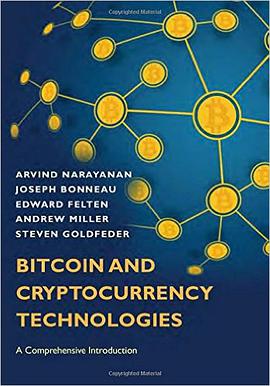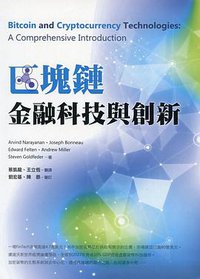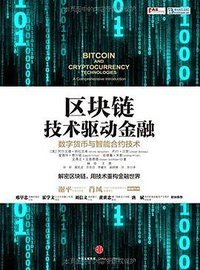Bitcoin and Cryptocurrency Technologies
豆瓣
A Comprehensive Introduction
Arvind Narayanan / Joseph Bonneau …
简介
Arvind Narayanan, Joseph Bonneau, Edward Felten, Andrew Miller, Steven Goldfeder, Bitcoin and Cryptocurrency Technologies, Princeton: Princeton University Press (forthcoming), 2016. This textbook closely follows the video lectures in the course. The official and professionally done version of the book will be out this summer.
Introduction to the book
There’s a lot of excitement about Bitcoin and cryptocurrencies. Optimists claim that Bitcoin will
fundamentally alter payments, economics, and even politics around the world. Pessimists claim
Bitcoin is inherently broken and will suffer an inevitable and spectacular collapse.
Underlying these differing views is significant confusion about what Bitcoin is and how it works. We
wrote this book to help cut through the hype and get to the core of what makes Bitcoin unique.
To really understand what is special about Bitcoin, we need to understand how it works at a technical
level. Bitcoin truly is a new technology and we can only get so far by explaining it through simple
analogies to past technologies.
We’ll assume that you have a basic understanding of computer science — how computers work, data
structures and algorithms, and some programming experience. If you’re an undergraduate or
graduate student of computer science, a software developer, an entrepreneur, or a technology
hobbyist, this textbook is for you.
In this book we’ll address the important questions about Bitcoin. How does Bitcoin work? What
makes it different? How secure are your bitcoins? How anonymous are Bitcoin users? What
applications can we build using Bitcoin as a platform? Can cryptocurrencies be regulated? If we were
designing a new cryptocurrency today, what would we change? What might the future hold?
Each chapter has a series of homework questions to help you understand these questions at a deeper
level. In addition, there is a series of programming assignments in which you’ll implement various
components of Bitcoin in simplified models. If you’re an auditory learner, most of the material of this
book is also available as a series of video lectures. You can find all these on our Coursera course . You
should also supplement your learning with information you can find online including the Bitcoin wiki,
forums, and research papers, and by interacting with your peers and the Bitcoin community.
After reading this book, you’ll know everything you need to be able to separate fact from fiction when
reading claims about Bitcoin and other cryptocurrencies. You’ll have the conceptual foundations you
need to engineer secure software that interacts with the Bitcoin network. And you’ll be able to
integrate ideas from Bitcoin into your own projects.
https://www.coursera.org/course/bitcointech
contents
Introduction to the book
A note of thanks
Preface — The Long Road to Bitcoin
Chapter 1: Introduction to Cryptography & Cryptocurrencies
Chapter 2: How Bitcoin Achieves Decentralization
Chapter 3: Mechanics of Bitcoin
Chapter 4: How to Store and Use Bitcoins
Chapter 5: Bitcoin Mining
Chapter 6: Bitcoin and Anonymity
Chapter 7: Community, Politics, and Regulation
Chapter 8: Alternative Mining Puzzles
Chapter 9: Bitcoin as a Platform
Chapter 10: Altcoins and the Cryptocurrency Ecosystem
Chapter 11: Decentralized Institutions: The Future of Bitcoin?
Conclusion to the book
About the authors

